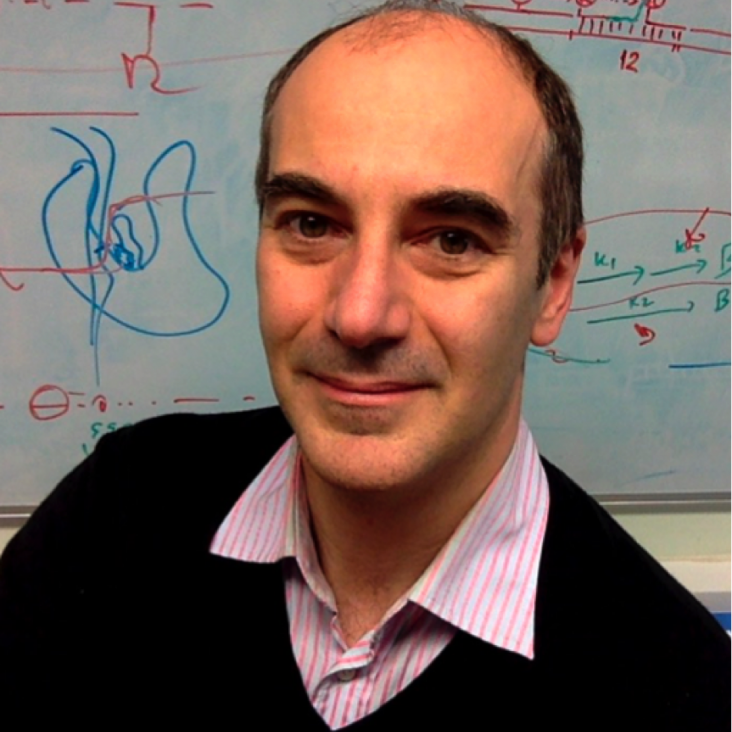Horizontally acquired AT-rich genes in Escherichia coli cause toxicity by sequestering RNA polymerase.
Nature microbiology 2 (2017) 16249-16249
Abstract:
Horizontal gene transfer permits rapid dissemination of genetic elements between individuals in bacterial populations. Transmitted DNA sequences may encode favourable traits. However, if the acquired DNA has an atypical base composition, it can reduce host fitness. Consequently, bacteria have evolved strategies to minimize the harmful effects of foreign genes. Most notably, xenogeneic silencing proteins bind incoming DNA that has a higher AT content than the host genome. An enduring question has been why such sequences are deleterious. Here, we showed that the toxicity of AT-rich DNA in Escherichia coli frequently results from constitutive transcription initiation within the coding regions of genes. Left unchecked, this causes titration of RNA polymerase and a global downshift in host gene expression. Accordingly, a mutation in RNA polymerase that diminished the impact of AT-rich DNA on host fitness reduced transcription from constitutive, but not activator-dependent, promoters.Single-molecule FRET reveals the pre-initiation and initiation conformations of influenza virus promoter RNA
Nucleic Acids Research Oxford University Press (2016)
Abstract:
Influenza viruses have a segmented viral RNA (vRNA) genome, which is replicated by the viral RNA-dependent RNA polymerase (RNAP). Replication initiates on the vRNA 3' terminus, producing a complementary RNA (cRNA) intermediate, which serves as a template for the synthesis of new vRNA. RNAP structures show the 3' terminus of the vRNA template in a pre-initiation state, bound on the surface of the RNAP rather than in the active site; no information is available on 3' cRNA binding. Here, we have used single-molecule Förster resonance energy transfer (smFRET) to probe the viral RNA conformations that occur during RNAP binding and initial replication. We show that even in the absence of nucleotides, the RNAP-bound 3' termini of both vRNA and cRNA exist in two conformations, corresponding to the pre-initiation state and an initiation conformation in which the 3' terminus of the viral RNA is in the RNAP active site. Nucleotide addition stabilises the 3' vRNA in the active site and results in unwinding of the duplexed region of the promoter. Our data provides insights into the dynamic motions of RNA that occur during initial influenza replication and has implications for our understanding of the replication mechanisms of similar pathogenic viruses.In vivo single-RNA tracking shows that most tRNA diffuses freely in live bacteria
Nucleic Acids Research Oxford University Press 45:2 (2016) 926-937
Abstract:
Transfer RNA (tRNA) links messenger RNA nucleotide sequence with amino acid sequence during protein synthesis. Despite the importance of tRNA for translation, its subcellular distribution and diffusion properties in live cells are poorly understood. Here, we provide the first direct report on tRNA diffusion localization in live bacteria. We internalized tRNA labeled with organic fluorophores into live bacteria, applied single-molecule fluorescence imaging with single-particle tracking and localized and tracked single tRNA molecules over seconds. We observed two diffusive species: fast (with a diffusion coefficient of ∼8 μm2/s, consistent with free tRNA) and slow (consistent with tRNA bound to larger complexes). Our data indicate that a large fraction of internalized fluorescent tRNA (>70%) appears to diffuse freely in the bacterial cell. We also obtained the subcellular distribution of fast and slow diffusing tRNA molecules in multiple cells by normalizing for cell morphology. While fast diffusing tRNA is not excluded from the bacterial nucleoid, slow diffusing tRNA is localized to the cell periphery (showing a 30% enrichment versus a uniform distribution), similar to non-uniform localizations previously observed for mRNA and ribosomes.RNA polymerase pausing during initial transcription
Molecular cell Cell Press 63:6 (2016) 939-950
Abstract:
In bacteria, RNA polymerase (RNAP) initiates transcription by synthesizing short transcripts that are either released or extended to allow RNAP to escape from the promoter. The mechanism of initial transcription is unclear due to the presence of transient intermediates and molecular heterogeneity. Here, we studied initial transcription on a lac promoter using single-molecule fluorescence observations of DNA scrunching on immobilized transcription complexes. Our work revealed a long pause ("initiation pause," ∼20 s) after synthesis of a 6-mer RNA; such pauses can serve as regulatory checkpoints. Region sigma 3.2, which contains a loop blocking the RNA exit channel, was a major pausing determinant. We also obtained evidence for RNA backtracking during abortive initial transcription and for additional pausing prior to escape. We summarized our work in a model for initial transcription, in which pausing is controlled by a complex set of determinants that modulate the transition from a 6- to a 7-nt RNA.Single-molecule imaging of UvrA and UvrB recruitment to DNA lesions in living Escherichia coli
Nature Communications Nature Publishing Group 7 (2016) 12568


